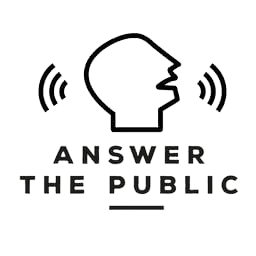- SEO
SEO Agency
Take advantage of the first traffic acquisition lever by entrusting your SEO to a digital agency experienced in SEO. - SEA
SEA Agency
Grow your business quickly with paid search (SEA).
- Social Ads
Social ads
Optimize your social media advertising campaigns to improve your performance.TikTok adsGo viral with your ads on TikTok

- Agency
The agency
Keyweo was born from the desire to create an agency that meets the principles of transparency, trust, experience and performance.
- Blog
- Contact
Long Tail
Home > SEO Agency > SEO Glossary > Long Tail
Definition
The long tail, as it’s called in English, is an SEO strategy that aims to target users’ longer queries on search engines like Google. This long tail technique was first popularized in the 2000s in the field of sales by Chris Anderson. It was in 2004 that he expressed the idea that selling a large number of products with low demand and low competition could bring in as much money as a large company focusing on a single type of product.
In SEO, a long tail search is considered to have between 3 and 7 words.
By definition, the long tail strategy leads to the creation of more specific content and thus less competition in page rankings.
There are three types of tails in referencing: the short tail, the medium tail, and the long tail.

The three different tails
The short tail
The Short Tail is characterized by a user’s less detailed search, typically with 1 or 2 keywords per search. This short tail is highly competitive for a site wishing to rank because it generally generates a large volume of searches. However, if this site has a very good position on short tails (in the top 3), then it will benefit the most from this large search volume.
For example, searches like “agency,” “audit,” or “SEO” are short tail searches.
The medium tail
The medium tail is a slightly more specific query than the Short Tail, typically consisting of 2 or 3 words. This tail is much less competitive than the Short Tail, leading to a decrease in search volume. However, to rank for a Medium Tail, a well-optimized site with good content is required.
Examples of Medium Tail searches include queries like “SEO agency” or “natural referencing.”
The long tail
As mentioned earlier, the Long Tail stands out due to the user’s more detailed keyword search. Moreover, the search volume is much lower than that of the Short Tail, but with much less competition on these keywords. That’s why an SEO strategy focused on Long Tail keywords is an excellent way to position a website effectively, especially for a site that does not yet have significant visibility.
Keywords like “best SEO agency Barcelona” or “SEO service quote” fall under the Long Tail.
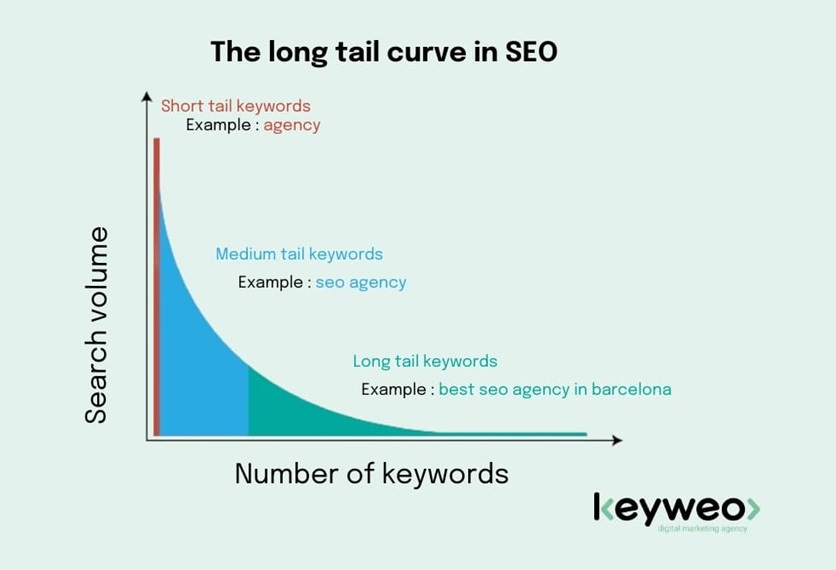
Short, medium, or long tail: what are the differences?
Here is a comparative table of the different types of trains mentioned earlier: short, medium, and long trains in order to clearly distinguish between them, as they do not meet the same expectations.
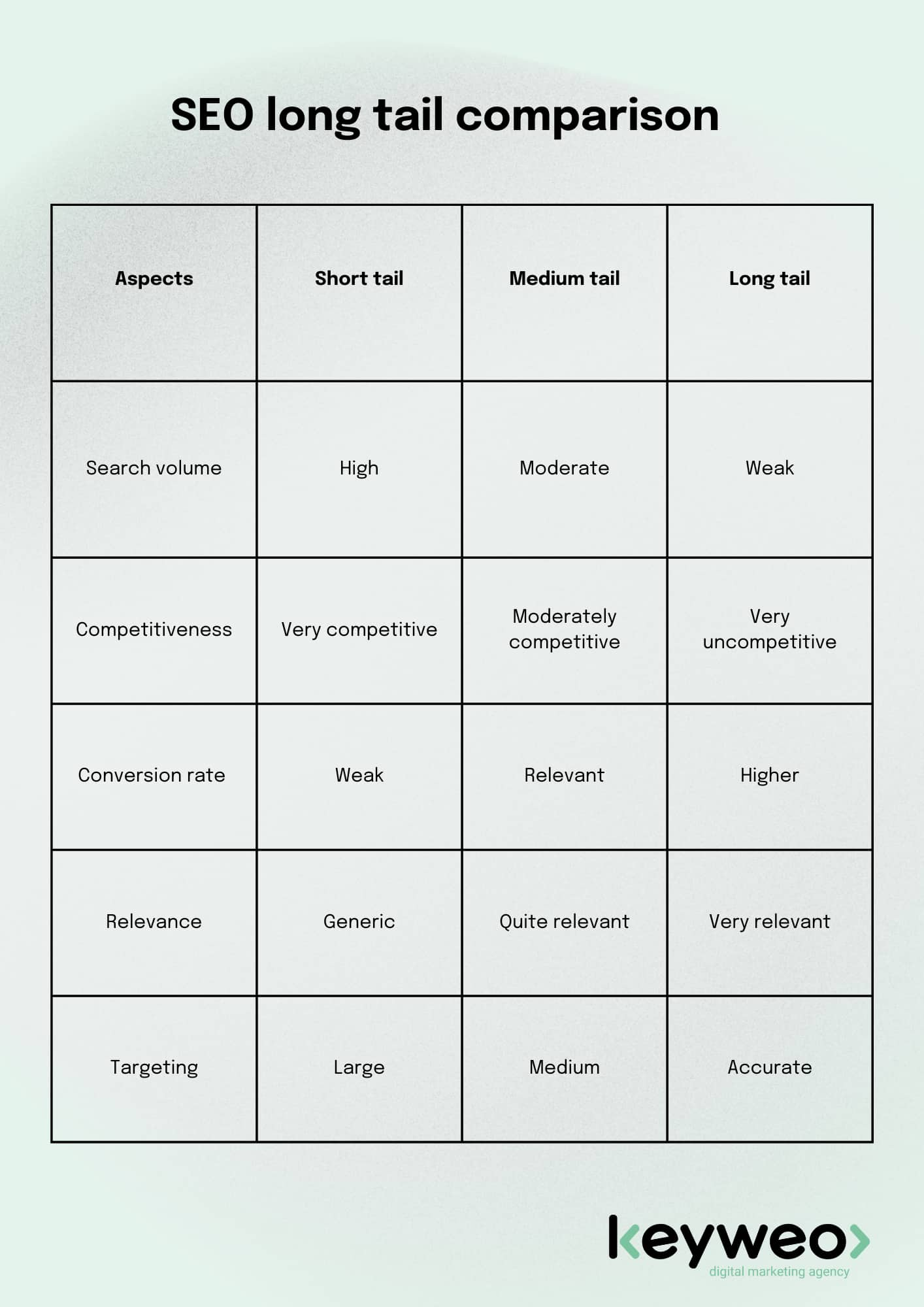
The advantages of the long tail
Specific queries
As mentioned earlier, the long tail offers certain advantages compared to the short tail and medium tail, notably in terms of the specificity of the user’s search. When a user conducts a specific search, they expect very precise information, which is why creating high-quality content is essential for a website and thus has a positive impact on the page’s SEO.
Qualified and targeted traffic
Indeed, Google ranks websites for long-tail searches that are most likely to meet the user’s query. This means that users arriving on a page optimized for long-tail keywords will find all the information they want and will spend more time there. Naturally, Google takes this into account and allows the website to be well-ranked for this type of long-tail search.
One of the advantages of the long tail, much less emphasized than those mentioned earlier, is its targeting. Indeed, optimized writing with more keywords allows visitors to the website to have very specific information about what they want. Therefore, it is much easier to determine a precise persona, including their needs and expectations. This is much more relevant for converting these users later on.
Low competitiveness
One of the most remarkable advantages of the long tail is obviously its competitiveness, which is much lower compared to the short tail. Indeed, it is much easier to rank for long-tail keywords, which represents an opportunity for less well-known sites to rank for these long queries.
Increased relevance
Indeed, ranking for long-tail queries allows for a very relevant response to user searches. By targeting more specific and detailed terms, a web page better meets user expectations because it has a clearer understanding of their search intentions.
Higher conversion rates
Having a long-tail strategy on a commercial page targeting commercial or navigational search intent is important in catering to the visitor’s search. For example, if a visitor searches for “SEO audit e-commerce site Barcelona,” then there’s a strong chance that if you offer such services with a page containing content on this long-tail search, your conversion rate will likely be higher than on a short-tail search by your user.
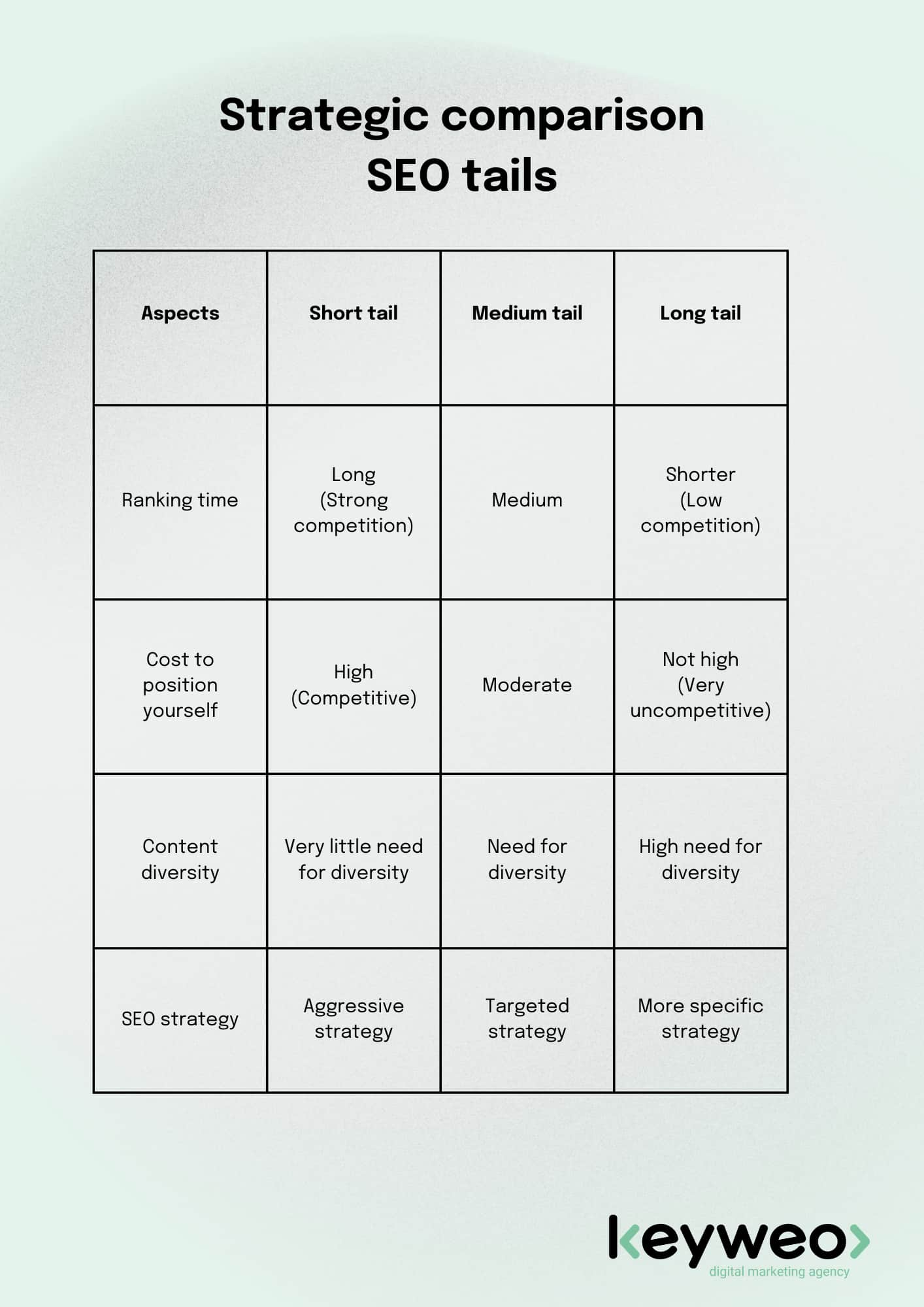
Who is the long-tail strategy aimed at?
Before implementing a long-tail strategy, it’s essential as a business to determine whether this type of strategy aligns with our market and is suitable for our objectives.
New website (SEO startup)
Businesses looking to establish an online presence with the creation of their own website are the first to have a significant interest in embarking on a long-tail strategy. Firstly, because at launch, their website will take time to begin ranking (on average six months). Therefore, aiming for short-tail keywords with high competition will not allow the site to improve its ranking quickly. This is why the long tail will enable these new sites to find a ranking for these searches, which will have a positive impact on their strategy going forward.
Finding a highly qualified audience
As mentioned earlier, one of the advantages of the long tail is the qualified and targeted traffic that this strategy brings, making it an indispensable strategy for any business wishing to position itself with a qualified audience. Indeed, knowing one’s audience subsequently allows for offering precise solutions to what they are searching for and thus achieving a good conversion rate.
Highly competitive market with limited SEO actions or budget
For a company operating in a competitive market, positioning itself on short-tail searches might be challenging, especially if major competitors are heavily investing in these keywords, particularly on Google Ads (buying ads that appear in the first position on Google). That’s why the long tail will play a key role in the strategy of such a company, allowing it to position itself on more precise searches, investing much less but still reaching a good search volume.
Keyword research: the key step to define your long tail strategy
To develop a long tail strategy, it requires several steps to meet the previously set objectives. The main step is keyword research, which allows for precise targeting. For this purpose, numerous tools are available to conduct this research, simplifying the subsequent creation steps to the maximum extent possible.
Definition of objectives and targets
Keyword research involves several key steps. First and foremost, it’s important to define the website’s objectives, such as increasing qualified traffic, generating leads, or selling products. This gives us an idea of the themes and content we want to create on our website. Next, understanding certain data is necessary to gauge the potential of the keywords we want to target. This data includes search volume, keyword difficulty, associated keywords, search intent, and more.
The right tools for keyword research
We mentioned some important tools to use for keyword research, notably SEMrush and Ahrefs, but there are other tools such as:
1. Haloscan: a free tool for keyword research.
2. Google Trends: a tool created by Google, which allows you to know the trends of keywords and see their evolution in terms of search volume over the past weeks, months, or years.

Keyword difficulty analysis
To analyze keyword difficulties, there are several methods available.
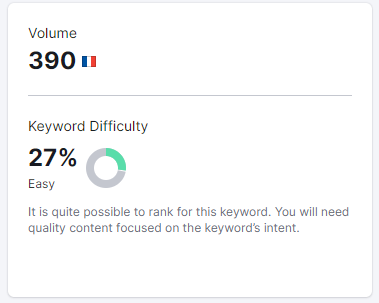
The allintitle method
The oldest one is the “allintitle” method. By adding the query “allintitle:” before the keywords, it allows you to know how many results (web pages) have these keywords in their page title. Then, to determine your competition rates, you simply need to compare the number of results on the search with “allintitle” to the number of results without “allintitle”.

Keyword difficulty on keyword research tools
The second way to check keyword difficulty is through tools designed for keyword research like SEMrush or Ahrefs. Indeed, these tools calculate keyword difficulty based on data collected on search volume, search intent, and other parameters, which will result in a score between 0 and 100. A keyword is considered very uncompetitive with a score of 0 to 25, moderately competitive between 25 and 50, and highly competitive between 50 and 100.
What are the ways to optimize your long tail?
Knowing the basics of SEO
In order to optimize your web page on search engines, it’s important to understand the fundamental principles of SEO so that it ranks higher on the search engine results page (SERP). Long-tail strategy doesn’t escape this rule either!
Content is king
First and foremost, it is essential to create quality, interesting, and relevant content for the targeted keywords. Google favors sites where users find the content they want. So, it’s crucial to ensure the published content is as clear as possible. Don’t hesitate to use bullet points, quotes, and skip lines between each paragraph.
Don’t neglect the structure of your content, especially its title and meta-description, which are key elements of your article’s visibility.
A smooth and well-organized website
The technical aspect of your website is also very important in your SEO. Google follows the same principle as it does for content for this technical aspect: the faster, smoother, and better organized your site is, the more Google will recommend your pages to users!
A trusted site
Lastly, the final aspect taken into account by Google is trust, which refers to the number of links redirected from other sources (web pages, social networks, email, etc.) to your website. An important data associated with this is the domain authority or DA, where each site has a score between 0 and 100.
Effective use of long-tail keywords
Once your long-tail strategy is in place, here are the best practices to implement for writing content around the long tail:
- Create your content around the previously defined keywords. This will allow you to highlight them in your content.
- Avoid overusing keywords, as this could penalize the content. Instead, vary with synonyms when possible.
- Bold important keywords to make them stand out in your content.
- Place strategic keywords well in your writing. It’s essential to place these keywords in the title, meta-description, as well as in the H2 of your articles.
All these elements will make a difference in your long-tail strategy, especially when Google positions you relative to your customers.
Regular analysis of your content: the step that makes the difference in your long-tail strategy
Why analyze your content regularly?
It takes about six months to index your content on Google depending on the popularity of your website. Google makes over 500 updates per year, causing a lot of micro changes in the positioning of your content. That’s why, when you implement a long-tail strategy, constantly check your content to see if its positioning has changed over time.
Google Analytics, the indispensable tool for analyzing your traffic
The most used tool for analyzing your traffic is Google Analytics. Once configured with your website, this tool will give you all the useful information about your website, such as traffic acquisition, engagement, monetization, and traffic retention.
Google Search Console, the indispensable tool for analyzing the keywords of your pages
The most important tool for analyzing the keywords that appear on your pages is Google Search Console. This tool will provide you with concrete feedback on your long-tail strategy. Indeed, this tool will allow you to have maximum information on how your traffic arrives on your site and what keywords users type in the search bar to come to your pages. Google Search Console will show you the main metrics of your web pages such as:
- The positioning of your page,
- The number of clicks,
- The number of impressions (the number of times your page appears in a search page)
- The click-through rate, also called CTR (the number of clicks per impressions).
Quick tip: on Google Search Console, it is possible to see which keywords users typed for each specific page. With this, you can see if your content writing is relevant to your long-tail strategy and what elements have worked or not. If not, don’t hesitate to adjust your content to better meet your strategy and better optimize your page for it.

Key tools for content creation and analysis
As mentioned earlier, there are numerous tools available for keyword research, as well as for facilitating content creation and analysis.
- Thruuu is a tool that provides content ideas to write about chosen keywords, but where it shines most is in the data analysis of the top 10 pages. Thruuu analyzes all the pages in the top 10 of a query and provides all the necessary information to create better content than them.
- AnswerThePublic offers a similar service but prioritizes results in the form of relevant questions related to the desired keywords.
- YoastSEO, on the other hand, is a plugin found on the WordPress CMS used for website creation without coding. This tool optimizes the integrated content in terms of SEO.
Finally, for keyword analysis, Google Search Console is the best tool available as it provides all the data available on the keywords of a website.
The long-tail : an effective long-term strategy
If you already have more generic articles on your website, adding long-tail optimized content is an asset not to be overlooked for your editorial strategy. Combining these two long-tail strategies improves the visibility of your pages on more generic content and also allows you to be more specific on certain keywords. That’s why creating a semantic field is an important element of your overall strategy. This long-tail-focused strategy will help solidify the foundations of your short-tail strategy and improve your organic growth in the long term.
The most populair definitions
Conversational search
Real time search
Informational search
Local search
Navigational search
Trademark query
Predictive search
Transactional search
Universal search
Visual search
Voice search
Generic query
Boost your visibility
Feel free to contact us for a free and personalized quote.
Notez ce page










